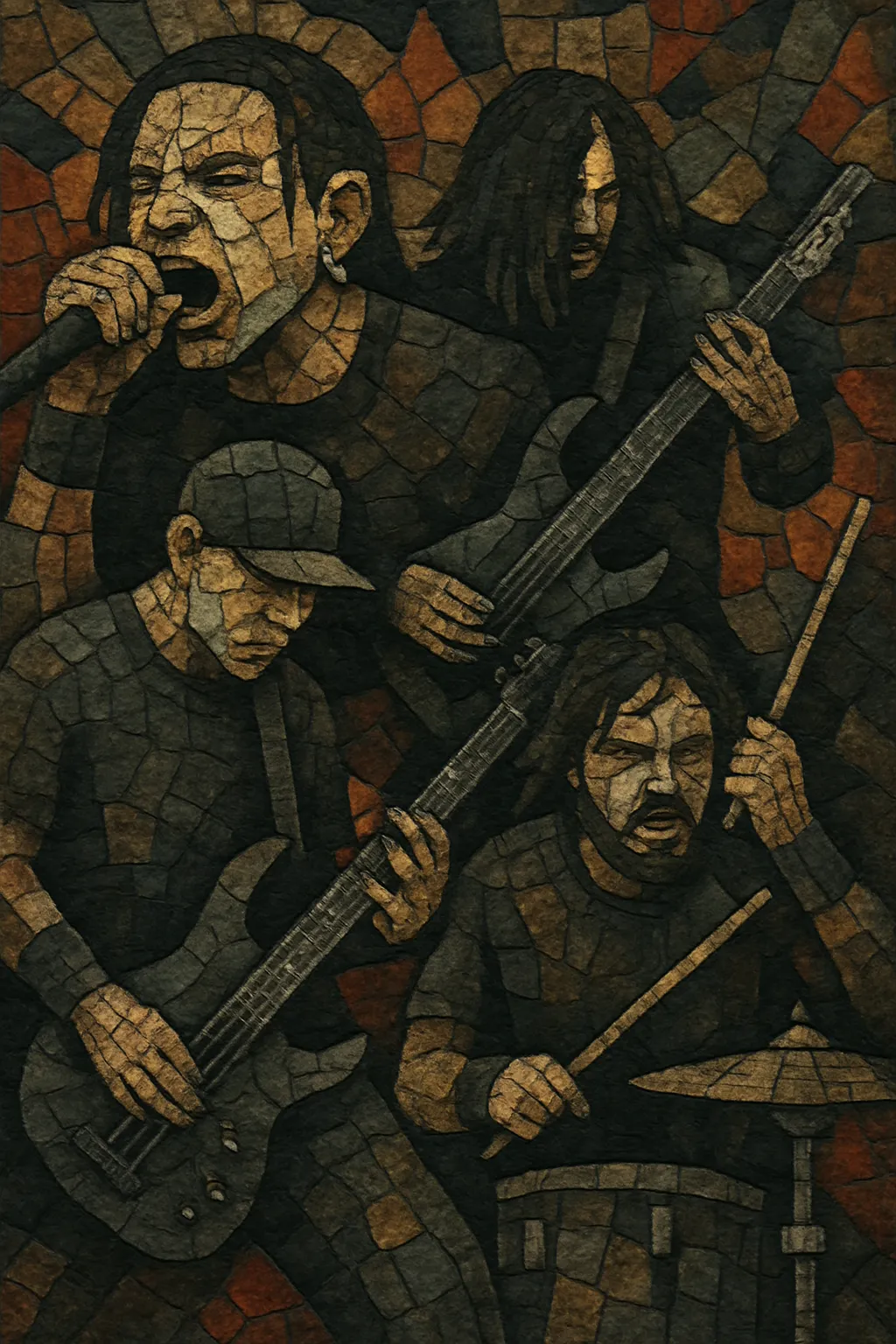Nu metal is a crossover style that fuses the weight and distortion of heavy metal with the rhythm, flow, and production techniques of hip hop and contemporary alternative rock.
Typical traits include down-tuned, groove-led guitar riffs (often on 7-string guitars), pronounced syncopation, simple but heavy harmonic movement, and a strong focus on hooks. Vocals often alternate between rapped verses, shouted/screamed passages, and melodic, radio-ready choruses. Turntables, samplers, and electronic textures appear frequently, while traditional guitar solos are rare or minimalist. Lyrically, the genre tends toward confessional themes—alienation, trauma, anger, and catharsis—delivered with intense immediacy.
Commercially, nu metal dominated rock radio and music television at the turn of the millennium, shaping a generation’s sound with its blend of club-ready beats, mosh-friendly riffs, and anthemic refrains.
Nu metal emerged in the United States as a boundary-pushing branch of alternative metal. Bands began combining downtuned, groove-heavy riffs and hardcore energy with hip hop cadences, DJ scratching, and sample-based textures. Korn’s 1994 debut is frequently cited as a blueprint, alongside early work by Deftones and Coal Chamber, which drew on grunge’s emotional rawness and groove metal’s punch while rejecting traditional guitar heroics.
By the late 1990s, the style surged into the mainstream. Limp Bizkit brought conspicuous turntablism and rap bravado, while Slipknot fused percussive theatrics with extreme intensity. Linkin Park’s Hybrid Theory (2000) perfected a pop-savvy version with crisp hooks and polished production, helping nu metal dominate radio, MTV, and festival circuits (e.g., Ozzfest). Acts like Papa Roach, P.O.D., Mudvayne, Disturbed, and System of a Down (often adjacent to or overlapping with nu metal) expanded the palette with melodic choruses, unusual time feels, and global influences.
As trends shifted toward garage/post-punk revival, metalcore, and indie, nu metal faced critical backlash for perceived formulaic songwriting and oversaturation. Many bands pivoted—adding more melodic alt-rock elements, industrial polish, or progressive textures—or stepped away from the sound entirely. Yet, the genre’s core signatures (downtuning, hip hop vocal hybrids, hook-forward choruses) persisted in adjacent scenes.
A wave of nostalgia tours and reissues re-centered nu metal, while younger artists blended its aesthetics with metalcore, electronicore, and hip hop’s 808-driven production. The rise of trap metal and "nu-metalcore" reflected the genre’s continuing impact: emphasis on groove, cathartic lyrics, and hybrid vocal delivery. Today, nu metal is regarded as a pivotal gateway that normalized cross-genre integration in heavy music—and a formative sound for a generation of listeners and creators.


